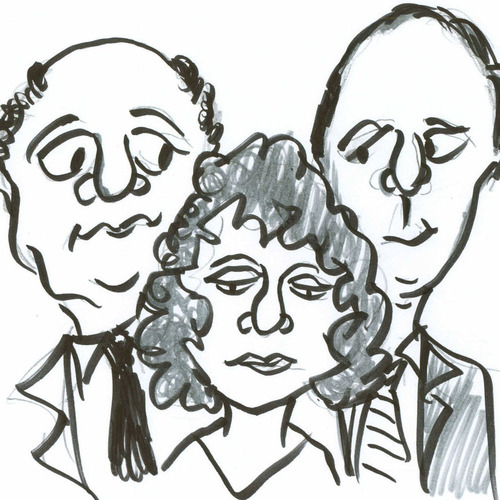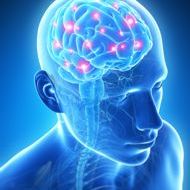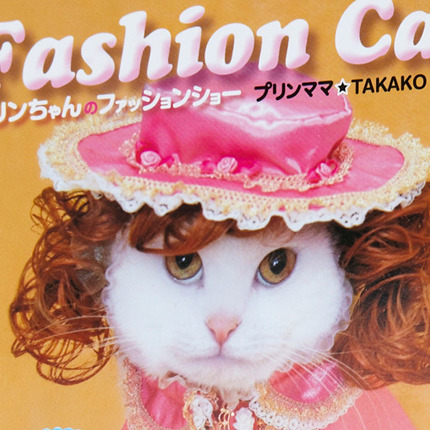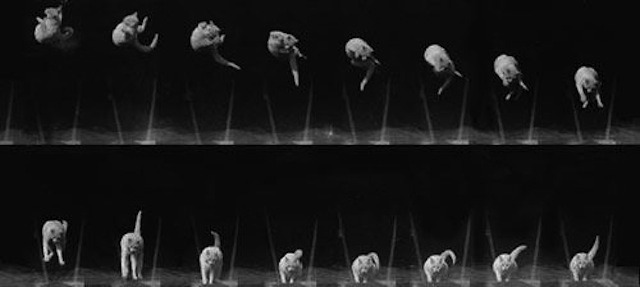[T]he snooze button. Should you hit it? Will doing so actually make you more tired?
Sadly, the answer is probably yes. You really just need to go to bed earlier.
If at first you don’t succeed, lower your standards. And if you find yourself acting out of line with your beliefs, change them. This sounds like motivational advice from one of the more cynical self-help books, or perhaps a Groucho Marx line (“Those are my principles, and if you don’t like them… well, I have others…”), but in fact it is a caricature of one of the most famous theories in social psychology.
Leon Festinger’s Dissonance Theory is an account of how our beliefs rub up against each other, an attempt at a sort of ecology of mind. Dissonance Theory offers an explanation of topics as diverse as why oil company executives might not believe in climate change, why army units have brutal initiation ceremonies, and why famous books might actually be boring.
The “Dissonance” is between the actions of the participants and their beliefs about themselves. [… T]here is a tension between their belief that they are a nice person and the knowledge of how they acted.
Normally it should be a totally healthy process – after all, who could object to people being motivated to reduce contradictions in their beliefs (philosophers even make a profession of out this), but in circumstances where some of our actions or our beliefs exist for reasons which are too complex, too shameful, or too nebulous to articulate, it can lead to us changing perfectly valid beliefs, such as how boring and pointless a task was.
Fans of cognitive dissonance will tell you that this is why people forced to defend a particular position – say because it is their job – are likely to end up believing it. It can also suggest a reason for why military services, high school sports teams and college societies have bizarre and punishing initiation rituals. If you’ve been through the ritual, dissonance theory predicts, you’re much more likely to believe the group is a valuable one to be a part of (the initiation hurt, and you’re not a fool, so it must have been worth it right?).
In a world where choice is overwhelming, and access to possibilities via the Internet are creating an obsession with connectedness, it has become harder to stay focused. And it is through this hyper-connection to the external world that we are losing the connection to ourselves.
Meditation offers a way to unplug from the incessant stream of information and noise, whether external or internal, and be reminded that there is a place to reside that is beyond time and beyond needing to be somewhere else. Meditation brings us close to the simple miracle of consciousness without needing a tragic shakeup to get there.
[L]osing connection with ourselves and our life purpose creates stress and puts us at risk of depression which, according to the World Health Organization, is predicted to become the second-largest health problem in the world by 2030. Meditation is one way that we can stay anchored to ourselves. It is an antidote to the rocket-like speed of technology, which is a wonderful resource but can also be an insidious distraction from the moment.
Francesca Gino is a professor at Harvard Business School and has done a number of fascinating studies in social psychology exploring the sometimes crazy things that influence your behavior and the biases the human mind seems inherently prone to.
In her book Sidetracked: Why Our Decisions Get Derailed, and How We Can Stick to the Plan she compiles many of her findings and lays out a strategy for overcoming your brain’s common errors so you can make better decisions.
What are her recommendations?
Via Sidetracked: Why Our Decisions Get Derailed, and How We Can Stick to the Plan:
• _ Raise your awareness._ Because our views of how capable and competent we are as individuals are often overly positive, we rely too much on our own information and ignore the valuable opinions that others have to offer. By raising your awareness, you can keep your self-views in check and recognize when they may be taking you off track.
• Take your emotional temperature. Even when triggered by situations or events unrelated to the decision at hand, emotions can derail us. They can lead to inaccurate analyses of the information at hand, thus moving us away from our plan of producing correct analyses. By taking your emotional temperature, you can examine what your emotions are telling you and whether they are clouding your decisions.
• Zoom out. We often focus too narrowly on the decision at hand and our own views about it. As a result, we fail to see the bigger picture, including other people’s roles. By zooming out, you can include more relevant information in your decision-making process so that you can avoid derailment.
• Take the other party’s point of view. There is always another side to a story: the other person’s viewpoint. Failing to recognize the potential for a different perspective can prevent us from sticking to the plan. By taking the other side’s point of view, you can analyze the decision you face from another person’s perspective.
• Question your bonds. As social beings, we easily form connections with others based on subtle factors, such as sharing the same birthday. These connections may expand our networks, but they can also derail our decisions. By questioning your bonds, you can carefully reflect on your ties and similarities to those around you and consider whether these bonds are affecting your choices for the worse.
• Check your reference points. The people around us provide natural reference points to help us understand where we stand across a variety of dimensions, from attractiveness to performance. How we measure up in these comparisons matters and can easily result in derailment. By checking your reference points, you can uncover the real motives behind your decisions and re-adjust accordingly.
• Consider the source. We look at the effort others put into their decisions to evaluate the quality of those decisions. When evaluating the quality of decisions, we examine their outcomes. Finally, we also discount how situational factors led to a given outcome. These biases lead us to judge others inaccurately. By questioning your sources, you can carefully examine the information surrounding your decisions.
• Investigate and question the frame. We can view the same glass as half empty or half full. Similarly, we can frame our offers and messages to others in different ways. Simple changes in framing can have significant effects on our motivation to act. By investigating the frame, you can ask questions about the way tasks, rewards, and choices are structured and learn how to avoid decisions being derailed.
• Make your standards shine. Our plans commonly reflect our desire to be moral individuals and to listen to our moral compass. Yet, from the amount of lighting in a room to the amount of resources at our disposal, subtle forces can send us off course. By making your standards shine, you can remind yourself of the importance of keeping your standards salient and become more likely to stick with them.
Most people aspire to be creative and have an original insight which makes them stand out from the crowd.
But is creativity a random process or is it something that can be nurtured and triggered using a variety of techniques? Scientists around the world are exploring what happens in the brain preceding that ‘eureka’ moment.
Their research suggests these five things could help you unleash your creative side.
Here are the five suggestions. Read the article for more details.
Do things differently
If you want to come up with innovative solutions to a problem which is bothering you, then doing something as simple as changing aspects of your daily routine could lead to a creative insight. […]
Cut distractions
[J]ust before [a eureka moment], there is a burst of alpha waves - which are associated with relaxation - in the back of the head.
People take in a lot of information visually but these alpha waves allow the brain to take a slight break - much like what happens when you blink your eyes.
This then allows this very faint idea to bubble up to the surface as an insight.
Work on mundane tasks
Another activity to help you trigger your creative brain waves could be to work on something that requires minimal thought. […]
“If you are stumped, take a break. Allow the unconscious processes to take hold. But rather than just sitting there, you might want to take a walk or a shower or do something like gardening.”
Don’t be afraid to improvise and take risks
“If people think about their daily behaviour - most of it is unscripted. Most of it is improvised. They don’t actually plan every second what they are going to do,” he says.
Just let your mind wander
When there is less activity in the frontal lobes, it is more likely that you can come up with an original idea. […]
He says it is possible to trigger this temporary brain state by meditating or taking a long run.
Glitch furniture makes your bedroom look like it’s malfunctioning
This isn’t Photoshopped. Furniture designer Ferruccio Laviani created this hand-carved storage unit so that it appears that you’re looking at a warped image.
7 Things We Learned About the World Thanks to Photography
Photography and science have gone hand in hand since Louis Daguerre used his fossil collection as the subject of one of his first daguerreotypes. But photography has also contributed to scientific knowledge, expanding our understanding of the world by capturing what the human eye cannot see or going places humans could not yet go.
Here are seven instances in which film photography, simply by virtue of being able to capture static images, added to our understanding of the world. Today, in a world where we see constant videos from the depths of the ocean and photos from space appear in our Twitter feeds, much of this seems obvious. But these photos represent both incredible technological achievements and contributions to human scientific knowledge.
The list:
How Horses’ Legs Move When They Gallop
How Cats Land on Their Feet
How Birds, Bats, and Insects Fly
How a Bubble Bursts
Animals Live on the Ocean Floor, Miles Below the Surface
What the Beginning of a Nuclear Explosion Looks Like
What the Earth Looks Like from Space
Pictured above: #2 How Cats Land on Their Feet
We relentlessly pursue happiness in every imaginable way. We pursue happiness in material possessions, in social status, and in the acceptance and recognition we get from others. We even search for happiness in various versions of a future-promised afterlife. But these pursuits rarely give us more than fleeting moments of joy. We end up missing out on lots of thrilling life experiences and contentment because we fail to understand a very simple but easily overlooked fact…
The Search for Happiness Causes Misery
You can’t find something that’s already here with you. Happiness exists in this moment. It’s not something you need to find. That’s like trying to find the oxygen you’re breathing right now.
We neglect to realize that sometimes the best way to solve a problem is to stop participating in the problem. Sometimes the best way to solve a problem is to simply stand still and breathe.
We Need to Stop Chasing Happiness
Instead, we should base our happiness on the life we are living – on the beauty that is already ours, on desires that don’t shift from moment to moment. We choose to find in our happiness now – in life itself. In fact, we don’t even need to ‘find’ happiness. We can be happiness.
[N]ew research from the U.K. has found cognitive benefits from listening to one of the most popular pieces in the repertoire: Vivaldi’s The Four Seasons.
In an experiment, the work’s evocative Spring section, “particularly the well-recognized, vibrant, emotive and uplifting first movement, had the ability to enhance mental alertness and brain measures of attention and memory,” reports Northumbria University psychologist Leigh Riby. He describes his study in the journal Experimental Psychology.
Participants reported feeling more alert while the Spring concerto was playing, and the EEGs suggest the music impacted “two distinct cognitive processes,” according to Riby. He reports the piece appeared to produce “exaggerated effects” on one component of mental activity that is tied with the “emotion-reward systems within the brain.”
This leads him to “other programmatic qualities of music” as the benefactor. Perhaps Spring really does evoke a feeling of springtime deep in our brains, lifting our moods and, at least momentarily, stimulating higher levels of cognitive functioning.
His findings may shed light on another recent study, which found people can improve their moods if they make a conscious effort to do so while listening to a different classical selection: Aaron Copland’s Rodeo. That piece, too, evokes pleasant imagery–cowboys, horses, a whirlwind of motion. It’d be interesting to see what impact it has on cognitive quickness.





